INTRODUCTION
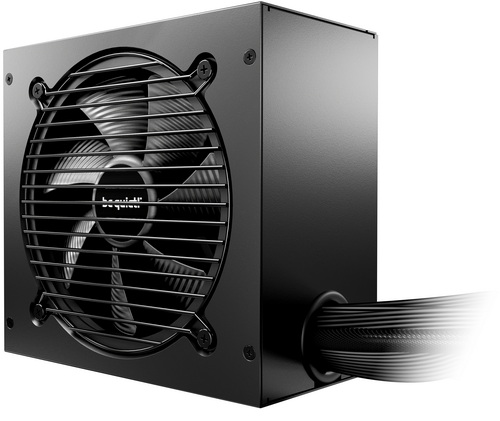
With the new Core Ultra 200S CPUs by Intel finally released to the public, the new GPUs also by Intel and NVIDIA set to be unveiled within a matter of months and the Christmas season right around the corner this is probably the best time for consumers to start considering which parts to upgrade and/or whether or not to build a brand new system. So, if you're out in the market for a new power supply unit it's a given that you'll be looking to get your hands on one of the latest PCIe 5.1 & ATX 3.1 compatible models and well, be quiet! just released one such model, the Pure Power 12 the 850W output variant of which landed in the lab a while back.
We are the German premium brand manufacturer of quiet hardware components for gaming, workstations and desktop PCs. Since our foundation in 2001, we are proud to have more than 20 years of experience in the industry. Our goal from the very beginning has been to develop products of the highest quality that are not only quiet, but also extremely powerful. With a wide range of power supplies, PC cases, water and air coolers and fans, we have established ourselves as a leading manufacturer in this field.
The brand new Pure Power 12 line of PCIe 5.1 & ATX 3.1 compatible power supply units by be quiet! currently includes 550/650/750/850/1000W output models all of which feature hardwired power cables and are 80 Plus Gold certified (up to 92.9% electrical efficiency). The 850W unit I have here with me today it comes ready with a single 12V-2x6 power connector (600W), 3 PCIe 6+2 connectors, single strong +12V rail (70.8A) capable of delivering 100% of the units’ total power output (850W) and a peak power output of no less than 988.6W (according to the new ATX 3.0/1 specification peak should now be up to 1.7KW for up to 100ms - this however is something I’m unable to test with such high wattage models). The Pure Power 12 line also features Active PFC, LLC Topology and a full array of electrical protections including over-current (OCP), over-voltage (OVP), under-voltage (UVP), short-circuit (SCP), over-temperature (OTP), surge and inrush protection (SIP) and over-power (OPP). Finally, once again be quiet! covers their entire Pure Power 12 line with a very generous 10-year limited warranty.
SPECIFICATIONS AND FEATURES
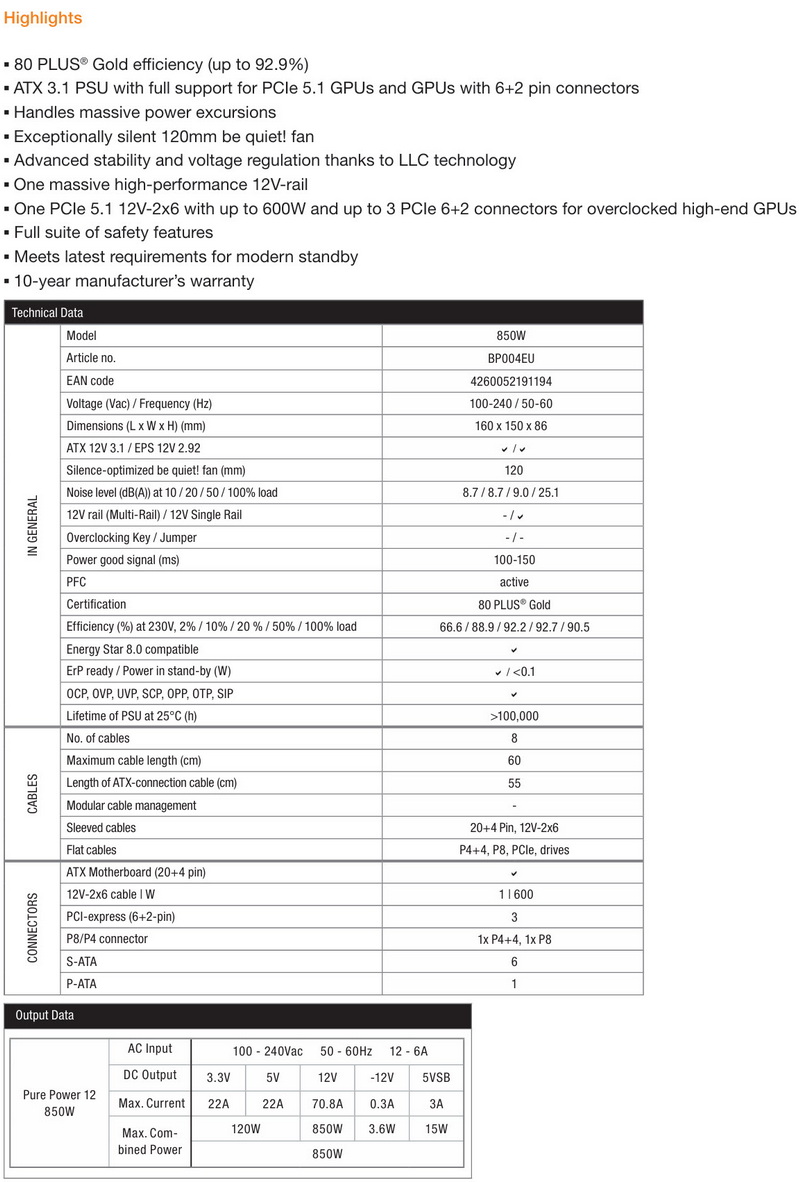
PACKAGING AND CONTENTS
Typically, at the front of the black box we find a large product picture, the company and 80 Plus logos and the power output.
The electrical table is printed at the rear of the box alongside several certifications.
Inside the box the PSU is placed between two thick pieces of cardboard.
Along with the Pure Power 12 850W, its modular cables and its power cord inside the box you'll also find 5 cable ties, 5 mounting screws and the user manual.
THE PURE POWER 12 ATX 3.1 850W EXTERIOR
The main power cables like the 24pin motherboard connector and the 12V-2x6 power connector are sleeved (all else are low-profile/slim ones).
For cooling be quiet! has used an 120mm intake fan placed under a nice looking grille.
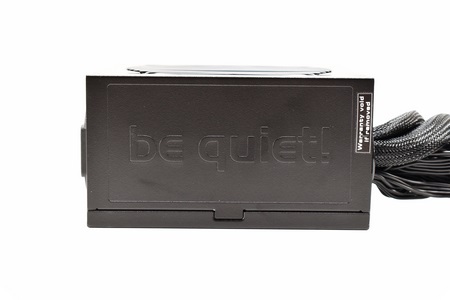
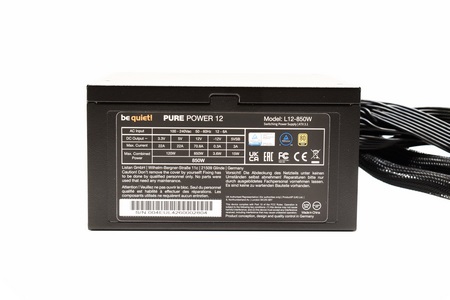 On the left side of the housing, we find the company logo whereas on the right we find a sticker with the electrical table on it.
On the left side of the housing, we find the company logo whereas on the right we find a sticker with the electrical table on it.
All power cables are hardwired and as you can see be quiet! has covered the hole with a plastic ring.
Moving at the rear we find the power port and the on/off power switch.
THE PURE POWER 12 ATX 3.1 850W INTERIOR
Once again be quiet! has used the 120mm BQ QF2-12025-HS fan (2000RPM) to keep temperatures in check.
Due to time restraints I once again forgot to check numbers, but interior layout and components do point to HEC being the OEM behind the new Pure Power 12 line (will double check update the review if this is not the case).
The primary capacitor is made by The Taiwanese Teapo Electronic (Jamicon Teapo) and is certified for use up to 105 degrees Celsius.
Secondary capacitors are also manufactured by Teapo and are also certified for use up to 105 degrees Celsius.
TEST BED
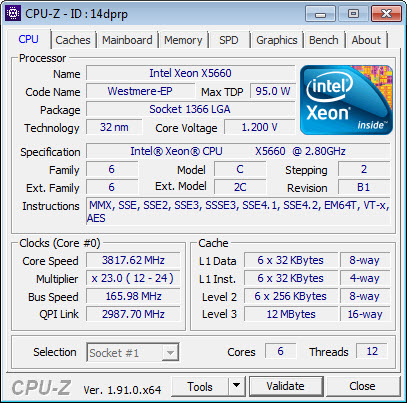

TESTING METHODOLOGY
Using a dedicated measurement instrument such as a Chroma or a SunMoon to test power supply units is without doubt the most ideal and accurate way (not to mention the fastest) to do that currently. However, it's certainly not the only way there is and so pretty much anyone can test a power supply unit just by using a test rig. Certainly, limitations do apply and so you can't really push a 1000W power supply to its limits if your system only uses 500W at peak loads and that's why over the years we saved certain hardware components for the purpose of building a dedicated PSU test rig. True it may not be as accurate as the above mentioned solutions, but it comes really close and is in fact much closer to real world usage. So as always, we ran several games with maximum graphic options enabled at a resolution of 2560x1600 in order to stress every hardware component and increase the overall power demands of the system. The Passmark BurnIn Test was also used to overstress the components in an effort to provide the most accurate results possible. As a final test we also used the latest OCCT 4.4 software and its dedicated PSU testing suite since it can really bring a power supply to its knees after inside a few minutes.
Rail stability was checked/measured with the CPUID Hardware monitor and a Metex multimeter which also recorded the system load in idle and in load. As always try to remember that the power consumption numbers listed in the graph are the highest (Peak) ones recorded during the entire duration of the tests and not the average ones. Noise levels coming from the fan were recorded using the high precision HD600 ExTech Sound dBA Meter from the rear of the unit and at a range of no more than 5-10cm. Readings under load are recorded the exact moment we manually switch the fans of all graphics cards from full speed to almost zero, that way the fan of the power supply does not have enough time to slow its RPM and so by doing this we get very accurate noise level readings. Needless to say, in order to get 100% accurate readings, you need to have a noise isolated room for that exact purpose, something which is quite impossible unless you are working inside a real lab (some people use very small noise insulated boxes but due to their size both heat and noise exceed normal levels and so the results can't really be considered to be 100% accurate, nor realistic for that matter). Also do take into account that since all noise measurements take place from just 5-10cm away the final noise levels to reach your ears will be considerably less.
* After well over 10 years of testing PSUs the Intel Core i7-920 CPU of this rig failed and so we replaced it with a Xeon X5660 (we also swapped the GA-X58A-UD7 for the G1. Assassin).
TEST RESULTS



CONCLUSION
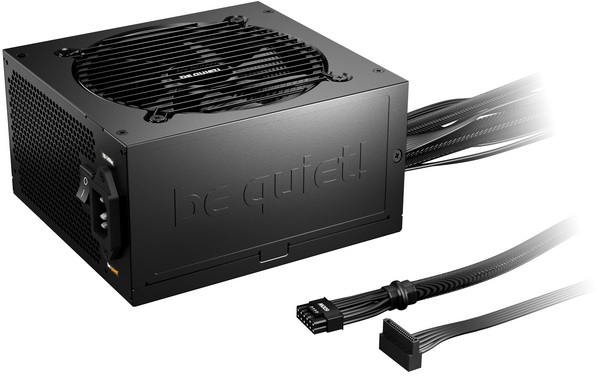
The Pure Power 12 850W ATX 3.1 model by be quiet! was officially released today and well, it’s a fine addition in their power supply lines. Yes, I am fully aware that non-modular models are not quite as popular as fully or even semi modular ones but if you’re looking for good performance, the latest 12V-2x6 power connector, low noise levels and most state of the art technologies around this unit delivers just that. I was surprised to see that be quiet! has used a more relaxed fan curve (compared to previous models) which means that even at full load the unit shouldn’t climb over 40dBA and that’s actually very good (at roughly 75% load the unit didn’t even surpass 35dBA). Finally, as with past models using Taiwanese capacitors may not look great to some consumers (certainly not as good as Japanese ones) but the generous 10-year limited warranty be quiet! provides with the Pure Power 12 ATX 3.1 line of PSUs should be enough to take their minds off that (besides, I’ve never had issues with Teapo capacitors).
Unfortunately, since the Pure Power 12 ATX 3.1 line by be quiet! was released today availability is still an issue and yes, this includes the 850W model. For now, I can only state the MSRP which is set at USD114.90/114.90Euros for the Pure Power 12 850W ATX 3.1 model, a price which is very balanced for this product. At the end of the day the new Pure Power 12 ATX 3.1 may not be the best money can buy but it does offer a very good price/performance ratio and for that it certainly deserves the Golden Award.

PROS
- Good Build Quality
- Solid Rail Stability
- ATX 3.1 & PCIe 5.1 (12V-2x6 Connector)
- 80 Plus Gold Certified
- Electrical Protections (OCP/OVP/SCP/SIP/OPP/UVP/OTP)
- Strong +12V Rail (70.8A)
- Low Noise Levels
- 10 Year Limited Warranty
CONS
- Current Availability
- Non Modular Model (For Some)
- Taiwanese Capacitors (For Some)

 O-Sense
O-Sense






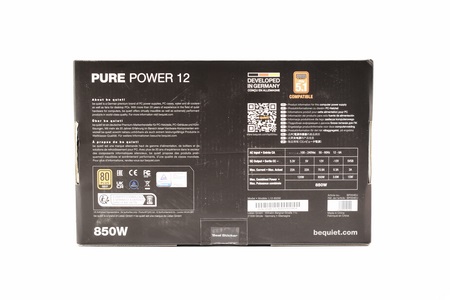
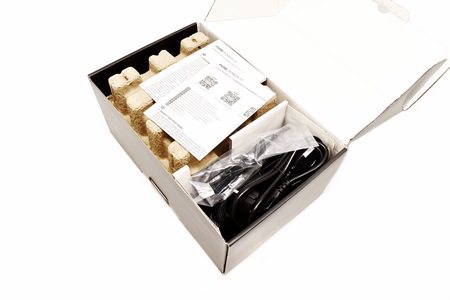

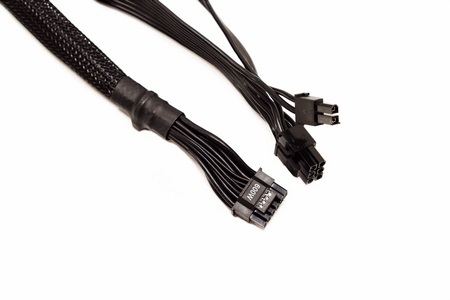
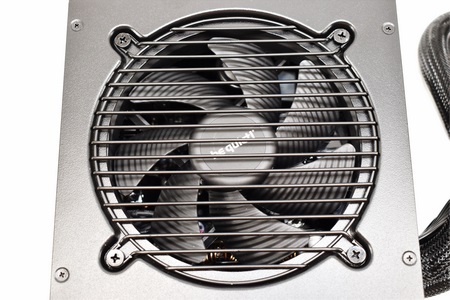
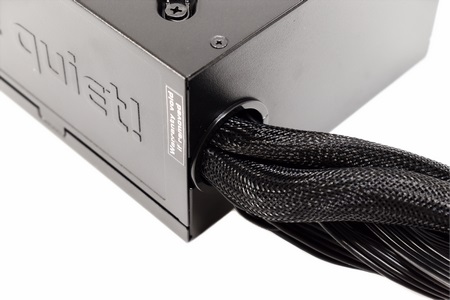
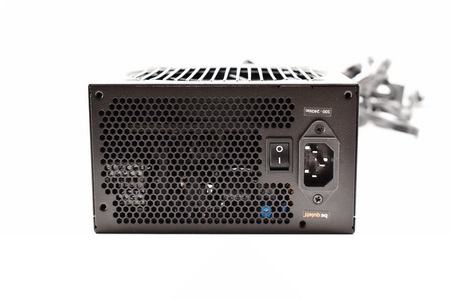

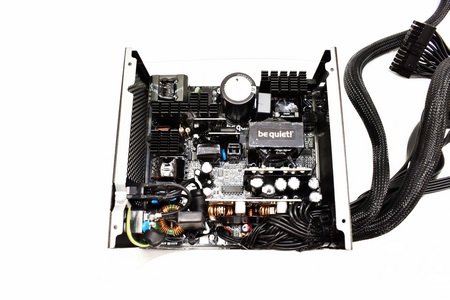
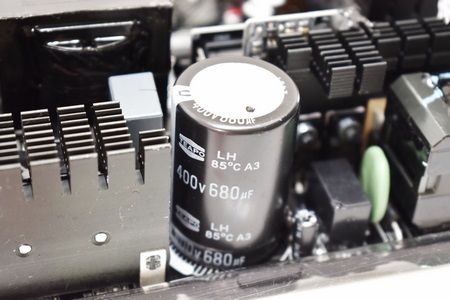
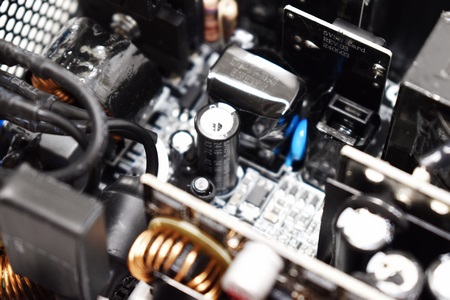
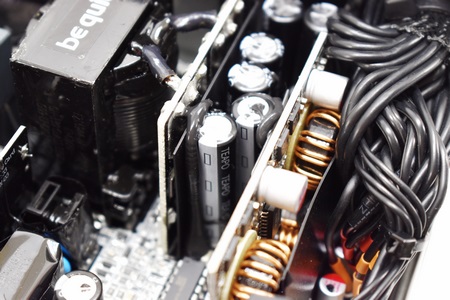


.png)

